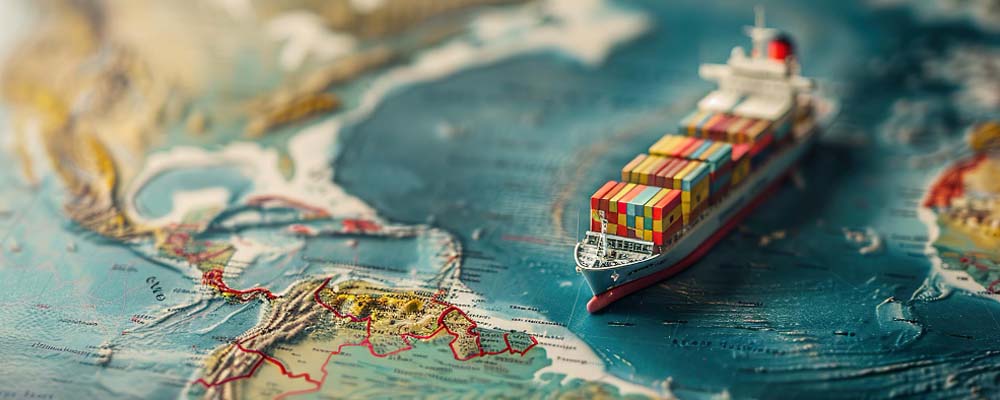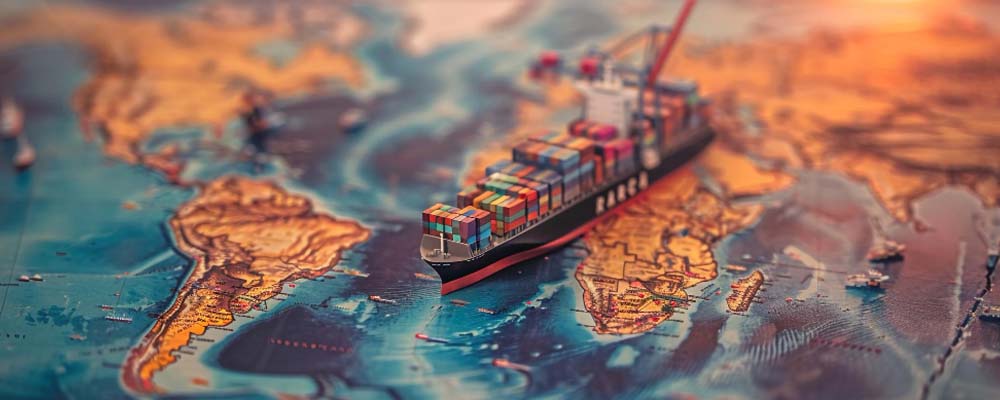
Shipping goods to India can be a complex task, but it doesn’t have to be. Whether you’re a seasoned logistics provider or a budding e-commerce entrepreneur, understanding the intricacies of international shipping can make or break your business. With over 1.3 billion potential customers, getting it right is crucial. In this comprehensive guide, we’ll walk you through essential tips and insights to ensure your shipments to India are smooth sailing.
Key Considerations for Shipping to India
Understanding the Market
India’s market is diverse and highly dynamic. It’s crucial to understand regional preferences, purchasing behaviors, and legal requirements. For instance, product demand can vary significantly across states. While electronics might be a hit in metro cities, rural areas could have a higher demand for agricultural equipment.
Documentation and Paperwork
Shipping internationally often involves extensive documentation. Ensure you’re well-versed with the necessary paperwork, including commercial invoices, packing lists, and certificates of origin. Incomplete or inaccurate documents can result in delays and added expenses. Use tools or software to streamline the documentation process and reduce human error.
Choosing the Right Shipping Partners
Your shipping partner can make a significant difference. Look for partners experienced in Indian logistics. They should offer reliable tracking systems, have a history of on-time deliveries, and provide excellent customer service. Collaborate with partners who understand the local landscape and can handle last-mile delivery efficiently.
 Rules for Packaging Your Parcel
Rules for Packaging Your Parcel
Sturdy and Secure Packaging
Given the long distances and multiple handling points, robust packaging is essential. Use high-quality materials to protect your goods. For fragile items, opt for bubble wrap and double-boxing. Securely seal your packages to prevent tampering and damage.
Labeling and Identification
Clear labeling is crucial for smooth customs clearance. Include all necessary information, such as the recipient’s address, contact details, and a detailed description of the contents. Avoid vague descriptions. Use labels that are weather-resistant to withstand various conditions during transit.
Compliance with Regulations
Ensure your packaging complies with Indian regulations. This includes adhering to specific material guidelines and labeling requirements. For instance, electronic goods must have a Bureau of Indian Standards (BIS) mark. Check the latest guidelines to stay compliant and avoid penalties.
 Products That Cannot Be Exported to India
Products That Cannot Be Exported to India
Restricted and Prohibited Items
Certain products are either restricted or outright banned from being imported into India. These include items like narcotics, pornography, and endangered species. Familiarize yourself with the restricted items list to avoid legal issues.
Special Permits and Licenses
Some goods require special permits or licenses. For example, importing medicines, chemicals, or firearms necessitates specific approvals from Indian authorities. Ensure you have the necessary permits before shipping these items.
Compliance Checks
Regularly check for updates on restricted and prohibited items. Indian regulations can change, and staying updated will help you avoid unnecessary complications. Utilize online resources or consult with customs brokers for the latest information.
Costs of Shipping to India
Shipping Rates and Charges
Shipping costs vary based on factors like weight, dimensions, and destination. Evaluate different carriers to identify the most cost-effective option. Factor in surcharges such as fuel charges and peak season surcharges.
Hidden Costs
Be aware of hidden costs that can inflate your shipping expenses. This may involve customs duties, taxes, and handling fees. Understanding these costs upfront will help you set realistic budgets and avoid unexpected expenses.
Saving Strategies
Consider consolidating shipments to reduce costs. Bulk shipping can often lead to discounts. Additionally, negotiating terms with your shipping partner can result in better rates. Implement efficient packing strategies to minimize weight and dimensions, thereby reducing costs.
How Long Does It Take to Get to India? Standard Shipping Times
Standard Shipping Times
Shipping times can vary based on the mode of transport—air, sea, or land. Air freight is faster but more expensive, typically taking 3-7 days. Sea freight is more economical but can take 20-30 days. Choose your shipping method based on urgency and budget.
Influencing Factors
Several factors can influence shipping times, including weather conditions, political stability, and customs processing times. Plan for potential delays and maintain clear communication with your shipping partners to manage expectations.
Tracking and Updates
Utilize tracking tools to monitor your shipment’s progress. Real-time updates can help you anticipate delays and inform your customers accordingly. Providing transparency in delivery times enhances customer trust and satisfaction.
Customs Regulations
Documentation for Customs Clearance
Proper documentation is vital for smooth customs clearance. Ensure all required documents, such as commercial invoices, packing lists, and certificates of origin, accompany your shipment. Missing documents can lead to delays and fines.
Duties and Taxes
Familiarize yourself with the duties and taxes that apply to your goods. The Indian government imposes various tariffs based on product categories. Calculate these costs in advance to avoid surprises. Utilize customs brokers to streamline the clearance process.
Efficient Handling
Work with customs brokers who have a good understanding of Indian regulations. They can expedite the clearance process and help you avoid common pitfalls. Regularly review customs updates to stay compliant with new regulations.
Holidays to Keep in Mind
National Holidays
India has numerous national holidays that can impact shipping schedules. Major holidays include Diwali, Independence Day, and Republic Day. These holidays can lead to delays in customs clearance and delivery services.
Regional Holidays
In addition to national holidays, India has many regional holidays that vary by state. Be aware of these regional holidays when planning your shipments. Consult with local partners to get accurate holiday schedules.
Planning Around Holidays
Plan your shipments around these holidays to avoid delays. Ship well in advance or schedule deliveries after the holiday period. Communicate expected delays to your customers to maintain transparency and manage expectations.
 Conclusion
Conclusion
Shipping to India can be a rewarding venture if navigated correctly. By understanding key considerations, following packaging rules, knowing restricted items, calculating costs, and planning around shipping times and holidays, you can ensure your shipments reach their destination smoothly. Partner with experienced shipping providers and customs brokers to facilitate the process.
Ready to take the next step? Contact us today to streamline your shipping operations and expand your market reach in India.




 Rules for Packaging Your Parcel
Rules for Packaging Your Parcel Products That Cannot Be Exported to India
Products That Cannot Be Exported to India Standard Shipping Times
Standard Shipping Times Conclusion
Conclusion



